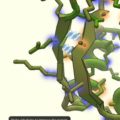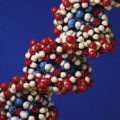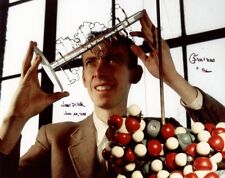
As revealed by the Human Genome Project, only a small fraction of the 3 billion “letter” DNA code actually instructs cells to manufacture proteins, the workhorses of most life processes. This has raised the question of what the remaining part of the human genome does.
Now, scientists from Cold Spring Harbor Laboratory (CSHL) and the University of Chicago report that one of the steps in turning genetic information into proteins leaves genetic “fingerprints”, even on regions of the DNA that are not involved in coding for the final protein. They estimate that such fingerprints affect at least a third of the genome, suggesting that while most DNA does not code for proteins, much of it is nonetheless biologically important – important enough, that is, to persist during evolution.
To gauge how critical a particular stretch of DNA is, biologists often look at the detailed sequence of “letters” it consists of, and compare it with a corresponding stretch in related creatures like mice. If the stretch serves no purpose, then, logically, the two sequences will differ because of numerous mutations since the two species last shared an ancestor. In contrast, it’s believed that the sequences of important genes will be similar, or “conserved,” in different species, because animals with mutations in these genes did not survive. Biologists therefore regard conserved sequences as a sign of biological importance.
Previously, researchers assumed that mutations in the middle of introns do not affect the final protein, so they simply accumulate. In the new study, however, the researchers found signs that evolution rejects some types of mutations even in these regions of the genome. Although the selection is weak, “introns are not neutral,” in their effect on survival, says CSHL’s Michael Zhang, who headed the research team.
To look for selection, co-researcher Chaolin Zhang looked in the human genome for a subtle statistical imbalance in how often various “letters” appear. The researchers attribute this imbalance to special short stretches of DNA that mark regions to be removed. Unless these signal sequences are sprinkled throughout an intron, the data suggest, it may not be properly spliced out, with potentially fatal consequences. Other sequences must likewise be preserved in the regions to be retained.
The scientists found a preference for some “letters” across intron regions, and the opposite preference in coding regions. Together, these regions make up at least a third of the genome, which is thus under selective pressure during evolution. The result supports other recent studies that suggest that, although most DNA does not code for proteins, much of it is nonetheless biologically important. In addition to demonstrating how splicing affects genetic evolution, the statistical analysis identified possible signaling sequences, some that were already known and others that are new.
Related:
Genome Analysis Left Wanting
Horizontal Gene Transfer Vastly Underestimated, Suggests New Study
Human Genome “Far More Complex Than Anyone Imagined,” Laments Prof
Junk RNA Begins To Yield Its Secrets










Comments are closed.